I wish to change the darknet_video.py from https://github.com/AlexeyAB/darknet/blob/master/darknet_video.py into a multi-processing program instead of multi-threading to avoid Python GIL and achieve actual parallelism
However, converting to a multi-processing program is very tricky such that multi-processes Queue requires pickable object and global variables are not shared.
I have been having errors "ValueError: ctypes objects containing pointers cannot be pickled"
I appreciate all help. It has been bothering me for weeks
Code for darknet.py( I believe I have to edit the classes to be pickable but I have no idea how to)
class BOX(Structure):
_fields_ = [("x", c_float),
("y", c_float),
("w", c_float),
("h", c_float)]
class DETECTION(Structure):
_fields_ = [("bbox", BOX),
("classes", c_int),
("best_class_idx", c_int),
("prob", POINTER(c_float)),
("mask", POINTER(c_float)),
("objectness", c_float),
("sort_class", c_int),
("uc", POINTER(c_float)),
("points", c_int),
("embeddings", POINTER(c_float)),
("embedding_size", c_int),
("sim", c_float),
("track_id", c_int)]
class DETNUMPAIR(Structure):
_fields_ = [("num", c_int),
("dets", POINTER(DETECTION))]
class IMAGE(Structure):
_fields_ = [("w", c_int),
("h", c_int),
("c", c_int),
("data", POINTER(c_float))]
class METADATA(Structure):
_fields_ = [("classes", c_int),
("names", POINTER(c_char_p))]
code for darknet_video.py
from ctypes import *
import random
import os
import cv2
import time
import darknet
import argparse
#from threading import Thread, enumerate
from multiprocessing import Process, Queue
#from queue import Queue
def parser():
parser = argparse.ArgumentParser(description="YOLO Object Detection")
parser.add_argument("--input", type=str, default=0,
help="video source. If empty, uses webcam 0 stream")
parser.add_argument("--out_filename", type=str, default="",
help="inference video name. Not saved if empty")
parser.add_argument("--weights", default="yolov4.weights",
help="yolo weights path")
parser.add_argument("--dont_show", action='store_false',
help="windown inference display. For headless systems")
parser.add_argument("--ext_output", action='store_true',
help="display bbox coordinates of detected objects")
parser.add_argument("--config_file", default="./cfg/yolov4.cfg",
help="path to config file")
parser.add_argument("--data_file", default="./cfg/coco.data",
help="path to data file")
parser.add_argument("--thresh", type=float, default=.25,
help="remove detections with confidence below this value")
return parser.parse_args()
def str2int(video_path):
"""
argparse returns and string althout webcam uses int (0, 1 ...)
Cast to int if needed
"""
try:
return int(video_path)
except ValueError:
return video_path
def check_arguments_errors(args):
assert 0 < args.thresh < 1, "Threshold should be a float between zero and one (non-inclusive)"
if not os.path.exists(args.config_file):
raise(ValueError("Invalid config path {}".format(os.path.abspath(args.config_file))))
if not os.path.exists(args.weights):
raise(ValueError("Invalid weight path {}".format(os.path.abspath(args.weights))))
if not os.path.exists(args.data_file):
raise(ValueError("Invalid data file path {}".format(os.path.abspath(args.data_file))))
if str2int(args.input) == str and not os.path.exists(args.input):
raise(ValueError("Invalid video path {}".format(os.path.abspath(args.input))))
def set_saved_video(input_video, output_video, size):
fourcc = cv2.VideoWriter_fourcc(*"MJPG") #Concat 4 chars to a fourcc code mjpg->video codec
fps = int(input_video.get(cv2.CAP_PROP_FPS))
video = cv2.VideoWriter(output_video, fourcc, fps, size)
return video
def convert2relative(bbox):
"""
YOLO format use relative coordinates for annotation
"""
x, y, w, h = bbox
_height = darknet_height
_width = darknet_width
return x/_width, y/_height, w/_width, h/_height
def convert2original(image, bbox):
x, y, w, h = convert2relative(bbox)
image_h, image_w, __ = image.shape
orig_x = int(x * image_w)
orig_y = int(y * image_h)
orig_width = int(w * image_w)
orig_height = int(h * image_h)
bbox_converted = (orig_x, orig_y, orig_width, orig_height)
return bbox_converted
def convert4cropping(image, bbox):
x, y, w, h = convert2relative(bbox)
image_h, image_w, __ = image.shape
orig_left = int((x - w / 2.) * image_w)
orig_right = int((x + w / 2.) * image_w)
orig_top = int((y - h / 2.) * image_h)
orig_bottom = int((y + h / 2.) * image_h)
if (orig_left < 0): orig_left = 0
if (orig_right > image_w - 1): orig_right = image_w - 1
if (orig_top < 0): orig_top = 0
if (orig_bottom > image_h - 1): orig_bottom = image_h - 1
bbox_cropping = (orig_left, orig_top, orig_right, orig_bottom)
return bbox_cropping
def video_capture(frame_queue, darknet_image_queue, darknet_width, darknet_height, input_path):
cap = cv2.VideoCapture(input_path)
video_width = int(cap.get(cv2.CAP_PROP_FRAME_WIDTH))
video_height = int(cap.get(cv2.CAP_PROP_FRAME_HEIGHT))
while cap.isOpened():
ret, frame = cap.read()
if not ret:
break
frame_rgb = cv2.cvtColor(frame, cv2.COLOR_BGR2RGB)
frame_resized = cv2.resize(frame_rgb, (darknet_width, darknet_height),
interpolation=cv2.INTER_LINEAR)
frame_queue.put(frame)
img_for_detect = darknet.make_image(darknet_width, darknet_height, 3)
darknet.copy_image_from_bytes(img_for_detect, frame_resized.tobytes())
darknet_image_queue.put(img_for_detect)
def inference(cap, darknet_image_queue, detections_queue, fps_queue, network, class_names):
while True:
darknet_image = darknet_image_queue.get()
detections = darknet.detect_image(network, class_names, darknet_image, thresh=args.thresh)
detections_queue.put(detections)
fps = int(1/(time.time() - prev_time))
fps_queue.put(fps)
print("FPS: {}".format(fps))
darknet.print_detections(detections, args.ext_output)
darknet.free_image(darknet_image)
def drawing(frame_queue, detections_queue, fps_queue, class_colors):
random.seed(3) # deterministic bbox colors
#video = set_saved_video(cap, args.out_filename, (video_width, video_height))
counts = dict()
while True:
y_coord = 20
for key, values in counts.items():
counts[key] = 0
frame = frame_queue.get()
if(detections_queue.qsize() == 0):
continue
detections = detections_queue.get()
fps = fps_queue.get()
detections_adjusted = []
if frame is not None:
for label, confidence, bbox in detections:
bbox_adjusted = convert2original(frame, bbox)
detections_adjusted.append((str(label), confidence, bbox_adjusted))
counts[label] = counts.get(label,0)+1
image = darknet.draw_boxes(detections_adjusted, frame, class_colors)
if args.dont_show:
cv2.imshow('Inference', image)
if cv2.waitKey(1) & 0xFF == ord('q'):
break
if args.out_filename is not None:
pass
#video.write(image)
if cv2.waitKey(fps) == 27:
break
)
if __name__ == '__main__':
frame_queue = Queue()
darknet_image_queue = Queue(maxsize=1)
detections_queue = Queue(maxsize=1)
fps_queue = Queue(maxsize=1)
args = parser()
check_arguments_errors(args)
network, class_names, class_colors = darknet.load_network(
args.config_file,
args.data_file,
args.weights,
batch_size=1
)
darknet_width = darknet.network_width(network)
darknet_height = darknet.network_height(network)
input_path = str2int(args.input)
t1 = Process(target=video_capture, args=(frame_queue, darknet_image_queue, darknet_width, darknet_height, input_path))
t2 = Process(target=inference, args=(darknet_image_queue, detections_queue, fps_queue, network, class_names))
t3 = Process(target=drawing, args=(frame_queue, detections_queue, fps_queue, class_colors))
p_list =[t1, t2, t3]
join_list = []
for p in p_list:
p.start()
join_list.append(j)
for j in join_list:
j.join()

